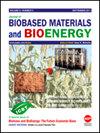Physiological Responses and Salt Tolerance Evaluation of Purple-Leaf Berberis (Berberis thunbergii var. Atropurpurea) and Glacier Red-Leaf Berberis (Berberis thunbergii) Under NaCl Stress
IF 0.5
4区 医学
引用次数: 0
Abstract
This study investigated the impact of various concentrations of NaCl stress treatment (0%, 0.1%, 0.2%, 0.3%, 0.4%) on the growth of one-year-old saplings of purple leaf barberry and glacier red leaf barberry. It also examined the impact on various physiological responses including plasma membrane permeability, antioxidant protective enzyme system, osmotic regulatory substance content, photosynthetic characteristics, ion content, and the ultrastructure of leaf cells using transmission electron microscopy. The goal was to determine the salt tolerance threshold and elucidate the physiological response mechanism to NaCl stress. The comprehensive assessment of salt tolerance in the two barberries was done using fuzzy membership functions. The results demonstrated that increasing concentrations of NaCl stress and longer treatment durations led to gradual decreases in sapling growth and increases in salt damage index. The salt tolerance thresholds were calculated to be 0.37% for purple leaf barberry and 0.33% for glacier red leaf barberry using the logistic curve equation. The activities of SOD and POD initially increased and then decreased in both barberries. Furthermore, MDA, free proline, and Na+ content gradually increased, while soluble protein content, chlorophyll content, net photosynthetic rate (Pn), K+ content, and K+/Na+ ratio gradually decreased. The purple leaf barberry displayed larger and deformed chloroplasts with significant separation of quality and wall, whereas the glacier red leaf barberry experienced a gradual decrease in chloroplast size and number until degradation. The membership function analysis revealed that purple leaf barberry exhibited superior resistance compared to glacier red leaf barberry.紫叶小檗 (Berberis thunbergii var. Atropurpurea) 和冰川红叶小檗 (Berberis thunbergii) 在 NaCl 胁迫下的生理反应和耐盐性评价
本研究探讨了不同浓度的NaCl胁迫处理(0%、0.1%、0.2%、0.3%、0.4%)对紫叶小檗和冰川红叶小檗一龄幼苗生长的影响。研究还利用透射电子显微镜检测了对各种生理反应的影响,包括质膜通透性、抗氧化保护酶系统、渗透调节物质含量、光合特性、离子含量以及叶片细胞的超微结构。目的是确定耐盐阈值,阐明对 NaCl 胁迫的生理响应机制。利用模糊成员函数对两种芭乐的耐盐性进行了综合评估。结果表明,NaCl胁迫浓度的增加和处理持续时间的延长会导致树苗生长量的逐渐减少和盐害指数的增加。利用对数曲线方程计算出紫叶小檗的耐盐阈值为 0.37%,冰川红叶小檗的耐盐阈值为 0.33%。这两种刺莓的 SOD 和 POD 活性都是先上升后下降。 此外,MDA、游离脯氨酸和 Na+ 含量逐渐增加,而可溶性蛋白含量、叶绿素含量、净光合速率(Pn)、K+ 含量和 K+/Na+ 比值逐渐降低。紫叶刺果的叶绿体较大且变形,质壁分离明显,而冰川红叶刺果的叶绿体大小和数量逐渐减少,直至退化。成员函数分析表明,紫叶刺桑的抗性优于冰川红叶刺桑。
本文章由计算机程序翻译,如有差异,请以英文原文为准。
求助全文
约1分钟内获得全文
求助全文

 求助内容:
求助内容: 应助结果提醒方式:
应助结果提醒方式:


